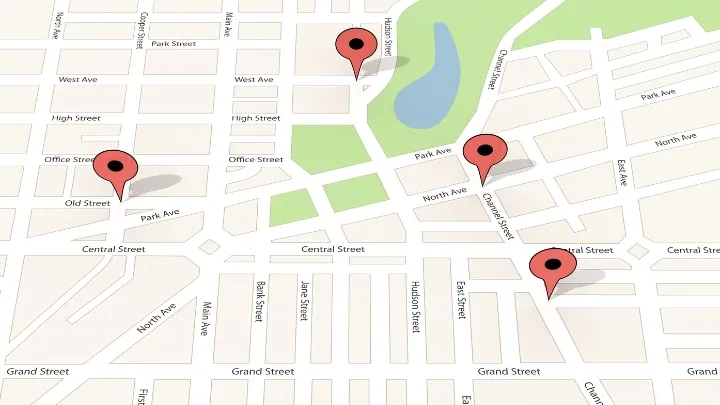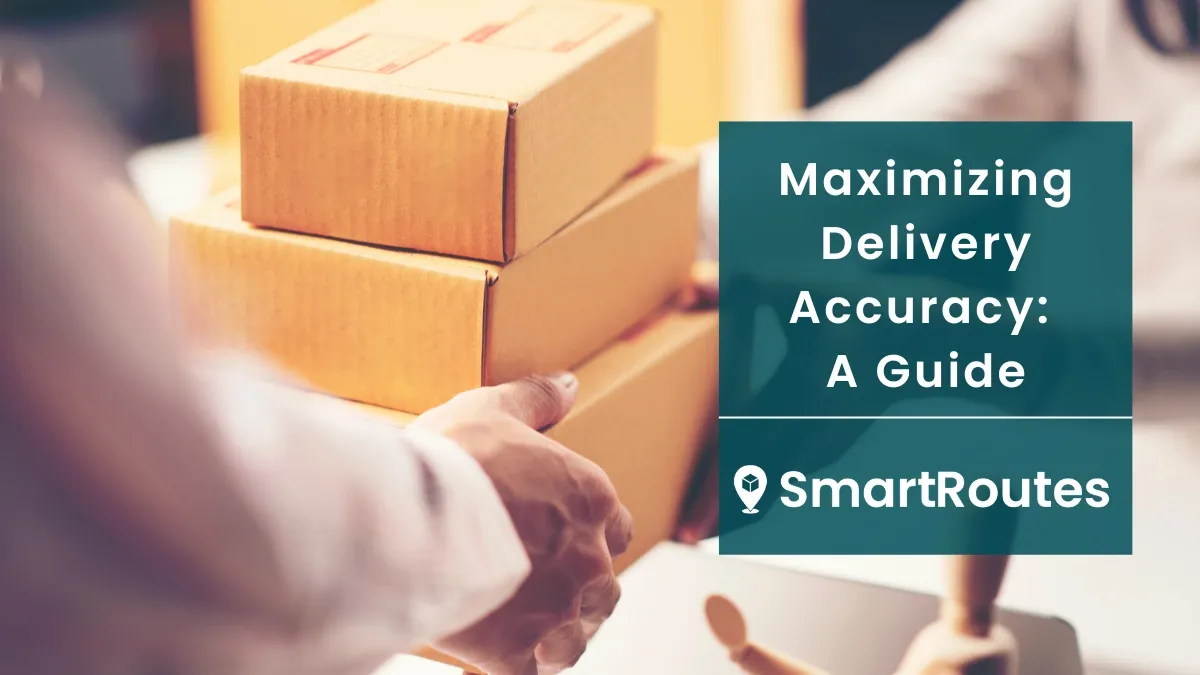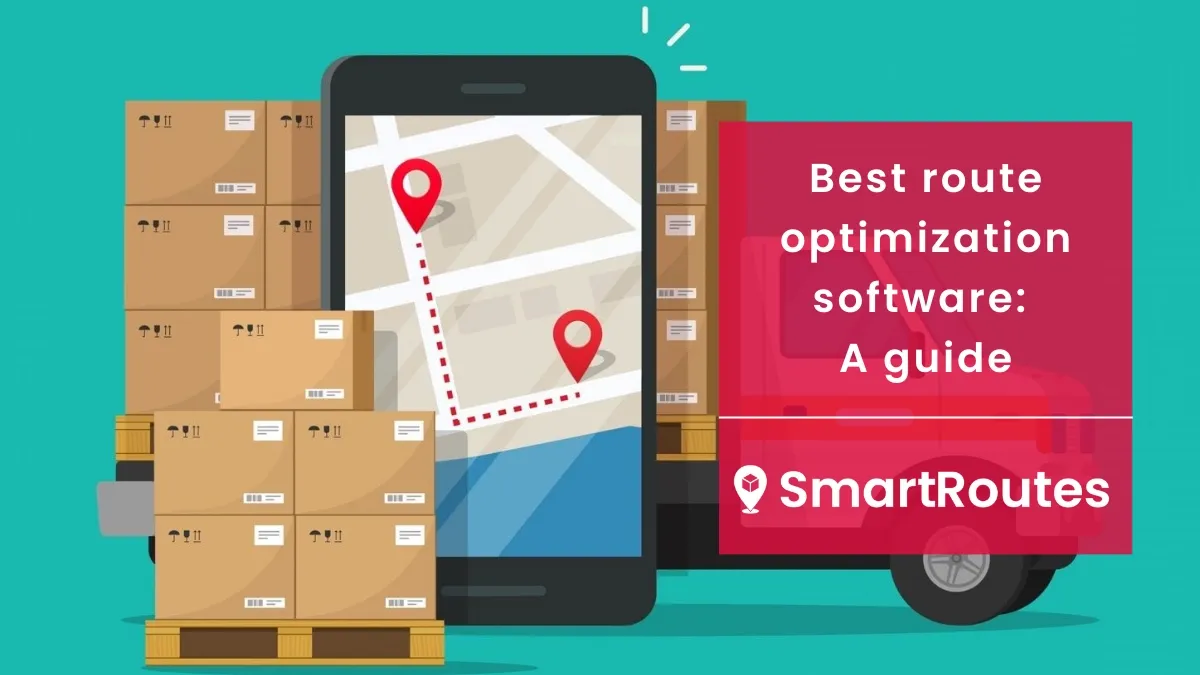8 Route Planning Mistakes to Avoid in 2024
In this blog, we examine the common mistakes in route planning and the consequences these errors can trigger throughout your operations.

Efficient route planning can be a make-or-break factor in delivery operations.
In this blog, we take a look at the common pitfalls that can derail even the most well-thought-out strategies. We'll examine the common mistakes in route planning and the consequences these errors can trigger throughout your operations.
The Consequences of Route Planning Mistakes
Understanding the fallout from route planning errors is crucial for customer satisfaction and improving profits. Overlooking these mistakes can lead to:
- Soaring Costs: The silent drain on resources often starts with increased driver and fuel expenses. Unnecessary mileage, backtracking, or empty miles due to inefficient routes can escalate operational costs, eating into profit margins.
- High Cost per Delivery: The aim of delivery services is cost-efficiency. Every missed delivery or re-delivery sends the cost per delivery skyrocketing. These unforeseen expenses can quickly erode the financial viability of your operations.
- Poor Customer Retention: Disappointment stemming from delays or missed expectations during deliveries can dent the trust customers have in your service, poor customer retention and a tarnished brand reputation.
- Delivery Delays: Time is of the essence in the world of deliveries. Failing to meet deadlines due to inefficient routes or unforeseen circumstances can directly impact customer satisfaction, disrupt supply chains, and even lead to contract breaches or penalties.
Fortunately, these outcomes ARE avoidable. By closely examining your process based on the following section, you will be able to avoid these consequences.
SmartRoutes Route Planning Software
Streamline your entire delivery process, all from one platform

8 Route Planning Mistakes to Avoid in 2024
1. Manual Route Planning
Manual route planning, while feasible for smaller fleets with a limited number of vehicles or static route requirements, often proves cumbersome and time-consuming when handling larger or dynamically changing logistics. The intricacies of planning routes manually can swiftly consume valuable team resources. Even in scenarios involving just one or two vehicles, the potential for human error is large, compromising the creation of optimally efficient routes.
In instances where routes demand frequent adjustments or responses to dynamic variables, relying solely on manual planning becomes increasingly impractical. Dynamic routes call for equally dynamic strategies, employing algorithms or adaptable methodologies to generate and adapt routes efficiently in response to changing conditions. These automated processes not only save time and money but surpass the limitations of manual planning.

2. Too Reliant on Driver Knowledge and Past Routes
Relying heavily on driver knowledge and past routes, while seemingly advantageous due to familiarity, can present challenges when confronting evolving circumstances. Even established or supposedly unchanging routes can unexpectedly demand alterations due to various factors such as modifications in road layouts, construction, or traffic conditions. Despite these changes, drivers might default to familiar pathways based on their prior experiences, potentially bypassing newly optimized or more efficient routes.
While driver expertise and familiarity with certain routes can be beneficial in navigating efficiently under normal conditions, there exists a risk of overlooking opportunities for improvement or quicker alternatives. Changes in infrastructure or traffic patterns may render previously reliable routes less efficient or even impractical. Moreover, the human inclination towards familiarity might discourage drivers from exploring new, potentially better routes, inadvertently hindering adaptability and optimization and resulting in missed opportunities for time and fuel savings.
To counter these limitations, integrating dynamic route planning systems that consider real-time data and adapt to changing conditions can supplement driver knowledge. These systems can suggest alternative routes that optimize efficiency, accounting for factors beyond past experiences, thus enabling a more adaptable and optimized approach to route planning and navigation.
3. Optimizing for Speed Only and not Allowing for Other Constraints
By fixating exclusively on rapid delivery times without considering other essential factors, the optimization process becomes incomplete and prone to setbacks. Failure to account for various constraints such as the duration of stops, effective load balancing, vehicle limitations, traffic conditions, driver skills, and necessary breaks can introduce inefficiencies into the delivery process. Ignoring these crucial elements can result in unintended delays, missed deadlines, and increased operational costs.
Inefficient load distribution within vehicles can lead to suboptimal use of space and increased fuel consumption. Disregarding traffic conditions or failing to anticipate potential delays can disrupt schedules, causing missed deadlines and dissatisfied customers. Neglecting the importance of considering driver skills and necessary breaks can impact both the safety and efficiency of deliveries. Overburdening drivers or disregarding their expertise may compromise the quality and timeliness of deliveries while also potentially affecting their well-being.
To counter these challenges, it’s important to include these variables in the optimization process, thus ensuring timely, cost-effective, and reliable deliveries while also maintaining driver well-being and overall operational efficiency.
4. Not Offering Delivery Time Windows
Offering delivery time windows isn't just a perk for consumers; it also benefits delivery teams and businesses in several unassuming yet impactful ways. While it does enhance the customer experience – a notable advantage in itself – its significance to delivery operations often goes underestimated.
Implementing delivery time windows facilitates strategic consolidation of deliveries within specific areas or during designated timeframes. By assigning time windows for different areas on particular days, businesses can optimize delivery routes, leading to increased delivery accuracy. This optimization minimizes missed and re-deliveries, translating to substantial time and cost savings for the company.
Also, the provision of delivery time windows significantly reduces customer inquiries regarding the status of their deliveries. Equipping customers with anticipated delivery timings empowers them with the necessary information, eliminating the need for frequent queries. Additionally, by keeping customers informed and engaged through delivery time windows, businesses foster a positive relationship, contributing to improved customer retention rates.
5. Neglecting Customer Requests
Customers often have unique preferences, ranging from specific delivery time windows and locations to intricate instructions for their orders. Additionally, some customers may anticipate expedited deliveries within specific timelines, such as same-day or two-day delivery options.
Integrating these diverse customer requests into route scheduling decisions is pivotal in meeting and exceeding customer expectations. Failure to accommodate these preferences might lead to dissatisfaction, disappointment, and ultimately, customers seeking alternative service providers. Tailoring route schedules to align with specific time windows and delivery locations specified by customers not only demonstrates attentiveness but also enhances the likelihood of successful, on-time deliveries.
6. Not Tracking Your Drivers
Failing to track your drivers throughout their routes can lead to significant operational challenges and missed opportunities for optimization. When the extent of your visibility into the day's activities merely involves observing departure and return times, it signifies a critical gap in understanding the journey in between, potentially indicating underlying issues.
Without real-time monitoring, drivers might deviate from planned routes due to unforeseen circumstances or roadblocks, leading to unexpected delays. These delays, if unreported or unaddressed, can persist and affect subsequent deliveries throughout the week, causing a ripple effect of inefficiency. Also, drivers navigating inefficient routes without oversight might find themselves backtracking or encountering unnecessary detours, significantly impacting fuel consumption, time management, and overall productivity.

Effective tracking systems offer real-time insights into driver locations, enabling businesses to proactively respond to unforeseen delays or route deviations. By promptly addressing such issues, adjustments can be made to optimize ongoing routes or provide necessary support to drivers facing obstacles, thereby mitigating the impact of delays and inefficiencies.
7. Not Optimizing Vehicle Capacity
Neglecting to optimize vehicle capacity within your fleet operations can significantly impact delivery efficiency and increase operational costs. Each vehicle in your fleet comes with specific constraints, such as cargo size, and weight limits. Failing to account for these constraints can result in inefficient use of resources, leading to vehicles carrying partial loads, underutilizing available space, and driving up the cost per delivery.
By implementing technology-driven optimization tools, businesses can streamline the allocation of deliveries to vehicles based on their unique capacities to ensure that each vehicle is utilized to its maximum potential. Furthermore, technology can optimize the way vehicles are loaded, considering not just the capacity but also the order of delivery. By strategically organizing the loading sequence, with the last item loaded being the first delivery, and vice versa, the unloading process becomes more efficient.
8. Not Monitoring Delivery Performance
Not monitoring delivery performance creates a blind spot within your operations, depriving your business of crucial insights and opportunities for enhancement. Tracking and analyzing delivery performance yields invaluable data that helps identify operational gaps, areas for improvement, and opportunities for efficiency.
By monitoring delivery performance, businesses can compare planned schedules with actual delivery times, enabling a clear assessment of the accuracy and efficiency of the planned routes. They can track the cost per delivery which provides a detailed understanding of the expenses associated with each delivery.
Additionally, monitoring delivery performance facilitates the identification of trends and patterns. This analysis can reveal recurring issues or bottlenecks within the delivery process. Armed with this knowledge, businesses can proactively address these challenges, implement process improvements, and streamline operations for greater efficiency.
Start the Year Right with SmartRoutes
By investing in route planning software powered by algorithms and real-time data, businesses can streamline their entire delivery operations. This strategic shift not only relieves the burden of manual route planning but also promises lower costs per delivery, heightened productivity, and an increased drop rate.
We invite you to try SmartRoutes out for free over the next 7 days to see for yourself. Take this opportunity to witness how intelligent route planning can revolutionize your logistics, setting the stage for a year of enhanced efficiency and success.
Frequently asked questions
1. How does route planning software optimize delivery operations?
Route planning software optimizes delivery operations through advanced algorithms and real-time data analysis. It considers various factors like traffic patterns, delivery constraints, road conditions, and vehicle capacities to generate efficient routes. By leveraging this technology, businesses can minimize fuel consumption, reduce delivery times, increase drop rates, and improve overall fleet productivity. The software continuously adapts to changing circumstances, allowing for dynamic route adjustments and ensuring the most optimized paths for deliveries.
2. What are the benefits of switching from manual to automated route planning?
Transitioning from manual to automated route planning brings several advantages. Firstly, it saves time and resources by eliminating the labor-intensive process of manually planning routes. Automated software generates optimized routes swiftly, leading to lower operational costs per delivery. Additionally, it minimizes human error and increases accuracy in route planning, resulting in improved on-time deliveries and enhanced customer satisfaction. Automation also enables real-time adjustments to routes based on changing conditions, ensuring adaptability and efficiency.
3. How quickly can businesses integrate this software into their operations?
The integration timeline for route planning software varies based on factors like the size of the operation, existing infrastructure, and the chosen software's compatibility. However, many route planning solutions offer user-friendly interfaces and seamless integration processes. Typically, businesses can expect a relatively quick implementation, with initial setup and training often taking a few days. Once integrated, the software can immediately start optimizing routes and providing value to the business.
If you enjoyed this blog, you might also be interested in:







